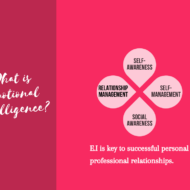Currently Browsing: Change management
Posted by Managementguru in Change management, Decision Making, Entrepreneurship, How To, Human Resource
on Jul 23rd, 2015 | 0 comments

I was going through this quote by Vince Lombardi the other day and couldn’t control my amusement and laughter for some time. “If you aren’t fired with enthusiasm, you will be fired with enthusiasm.” But the truth behind this statement looms large in front of all HR professionals when they start working for an organization in whatever capacity. Results, Targets, Closing the sale, Clinching the deal are the inevitable management mantras that drive the executives crazy. Isn’t it funny that it is very important to keep the morale high of the survivors during a layoff strategy! How on earth one can expect such a thing to happen when you know the sword is dangling above your head too! Please remember, “Resources are hired to give results, not reasons.” You need to be a star performer the first time and every time. Why Downsizing Happens? When the management of an organization finds out that their organization is not operating at peak efficiency, they naturally look for ways to make the organization more productive. This is seldom accomplished via organizational downsizing, which is a reduction in organizational size and operating costs implemented by management in order to improve organizational efficiency, productivity and/or the competitiveness of the organization. Courtesy: Cartoonstock.com Organizational downsizing affects the work processes of an organization since the end result of the downsizing is typically fewer people performing the same workload that existed before the downsizing took place. Download this Team Meeting Planner and Let us Know if You Found it Useful Team-Meeting-Agenda-PlannerDownload The act of downsizing results in two categories of people: victims, the people who involuntarily lose their jobs due to organizational downsizing, and survivors, the employees who remain after organizational downsizing takes place. When is Downsizing the Answer and How to Do it Right? “When downsizing is a knee-jerk reaction, it has long-term costs.” In order for an organizational downsizing to be most effective, management must connect openly and honestly with their employees concerning the reason for the downsizing and the downsizing plan. Managers also need to listen to employees and provide comfort when necessary in order to keep the morale high among the survivors of the downsizing. It is also important that management take steps to prepare the workforce in advance of the downsizing. Proper planning includes outplacement strategies, which is the process of supporting former employees in finding new employment and training and re-skilling the remaining workers into their new jobs. By treating the victims of downsizing fairly and compassionately, the survivors of the downsizing are more likely to remain loyal to their organization. Best Practices for Managing the Downsizing Process Be transparent about the current conditions that the organization faces and the potential impact on the workforce.Treat laid-off employees with respect and sensitivity.On the day of discharge, give employees options on how they want their exit handled.Ensure that procedures used to make decisions are seen as just and fair.Carefully examine the impact of employment downsizing on all HR systems.Give survivors a reason to stay and new hires a reason to join. Kim Cameron’s 3 Types of Downsizing Strategies 1. Workforce Reductions – short-term strategy to cut the number of employees through attrition, early retirement or voluntary severance packages, and layoffs or termination. 2. Work Redesign – medium-term strategy in which organizations focus on work processes and assess whether specific functions, products and/or services should be eliminated. 3. Systematic Change – long-term strategy that changes the organization’s culture and attitudes, and employees’ values, with the goals of reducing costs and enhancing quality. Why Do Organizations Downsize? Declining profitBusiness downturn or increased pressure from competitorsMerging with another organization, resulting in duplication of effortsIntroduction of new technologyThe need to reduce operating costsThe desire to...

Posted by Managementguru in Change management, Decision Making, How To
on Mar 20th, 2015 | 0 comments

How to find a job you love and do it with passion (not for people who want to become billionaires) a. Self-Discovery: Try to find out what kind of activities you enjoy doing the most and explore if you could turn that hobby or free time activity into a revenue generating source. When you do something with the single aim of earning money or generating profit, an unnecessary pressure comes and sits on your shoulder and presses you down. Follow ManagementGuru Net’s board Interview Prep on Pinterest. For example, if you like music, you could set up a band with like-minded individuals. You may ask how you can even compare the sophistication of a blue collar job with this kind of free-lancing. The issue here is job satisfaction and ultimately the effect of job dis-satisfaction on your health physically or mentally (Of course both are inter-related). If you love gardening, you can always set up a nursery and serve your community. Procure unique saplings and educate the masses on how to keep a small garden. And believe me, people are longing for green atmospheres and there is always scope for you to extend your services into landscaping. Tags: To know the kind of person you are, the kinds of activities you enjoy doing, activities you are doing those are not satisfying to you. b. Personal Identity: The highlight of doing something that you love for a living is that, it reflects your personal identity. Try finding a way to make money doing the things you like to do. Quit doing a job that creates mental and /or physical problems and gauge whether it is directly associated to your job dis-satisfaction. Tags: Personal Identity, Job dissatisfaction. c. Simplify Your Life: Simplify your life so you need less money, allowing you to engage in activities that are satisfying to you, even if they make little or no money. This works out well if you are a single/unmarried person, but when you raise a family it becomes a tough task to make the ends meet and you may start doubting your own abilities to make money. Modern world with all the technological advancements has made man lethargic and technology-dependent. Your son/daughter may not go with your ideas and treat you as an alien if you want to be any different from others. Tags: Simple life, Satisfying work We are able to see a lot of people who work for the IT industry suffering due to their weird work-hours, mental pressure and work-life imbalance. People at one point want to break the hell loose and get out of the monotony. Our education system also plays a big role in shaping the destiny of the future generation. Youngsters must be encouraged to pursue something they are good at and are willing to do. This is all easier said than done. But you will know you have found the right path for yourself when you get up each morning eager to face the day to do the things you like doing and which financially support you. This article is written based on the publication of Prof. Sydney Ross Singer, Medical Anthropologist. To see his posts on academia.edu visit this link...

Posted by Managementguru in Business Ethics, Change management, CSR, Marketing
on Jan 11th, 2015 | 0 comments

Consumer Loyalty Is Driven By ‘#Trust’ One of my most favorite things to say is that people hire brands that they know, like, and trust. Think about it. How do you feel about your insurance man, or the guy who sold you your last car? In all of our lives, there is a salesman that we feel connected to, or a brand that is familiar to us. Making a purchase isn’t just something that we do, it is something that we experience. Managing Brand Equity: Capitalizing on the Value of a Brand Name When it comes to business and sales, we start to look at things from a different perspective. How do we get our customers to know, like, and trust us? In a recent report, Havas Media ranked the world’s most meaningful brands. Topping the list were companies like IKEA, Google, #Nestle, Danone, Leroy-Merlin, Samsung, Microsoft, Sony, and Unilever. Major brands to be sure, but what is it exactly that makes them so meaningful? Which brands ranked the highest? Ikea Google Nestle Danone Leroy-Merlin Samsung Microsoft Sony Unilever Bimbo Garrett Moon 90% of Americans more likely to trust brands that back #social causes If your brand doesn’t support social causes, it’s missing out on a huge audience. Consumers don’t just like when companies incorporate social good into their business models — they’ve come to expect it, whether it’s through #corporate social responsibility (CSR), cause marketing or “good” content. In fact, 90% of Americans say they’re more likely to trust and stay loyal to companies that actively try to make a difference. #Customer Loyalty: How to Earn It, How to Keep It Studies also show that 88% of consumers would buy a product with a social or environmental benefit, and a surprising 84% would tell friends and family about a company’s CSR efforts. Brands can tap into this consumer base through original content and social media. After all, 64% of millennials use social media to address companies about social and environmental issues, and 36% of consumers say they mainly share content to promote the causes they care about. But your company needs to be genuine. Don’t underestimate your consumers’ intelligence by simply jumping on this bandwagon. “Causewashing” is a serious issue, and odds are your consumers will smell it a mile away. Matt Petronzio Google Beats Apple Apple is out, Google is in. Google has usurped Apple—leader for three years in a row—on the 2014 BrandZ Top 100 Most Valuable Global Brand ranking, out today. It has grown 40 percent since last year and has a #brand value of $159 billion. So why and how did Google bump Apple? “It’s a story about two hugely #successful technology companies,” said Oscar Yuan, VP at Millward Brown Optimor. “Apple’s been known for earth-shattering, category-creating, revolutionary products. And I would say just recently Apple’s innovations have been more evolutionary than revolutionary. I think that may have played a little bit in the drop from first to second,” he said. “Google has been doing just the opposite—they’ve been organizing the world’s information and putting it at your fingertips. Even to things as aggressive as GoogleX—they are making WiFi available globally by putting satellites tied to balloons over the earth. [That kind of innovation] does enormous things for the brand—it’s seen as a making-dreams-come-true-type company, and that certainly helps their brand value,” Yuan said. Jennifer Rooney Related Posts: CSR How to Build Brand Value of Businesses? Does Your Company Have What it Takes to be a...

Posted by Managementguru in Business Management, Change management, Decision Making, Entrepreneurship, Human Resource, Leadership, Motivation
on Oct 1st, 2014 | 0 comments

Helpful Tips for Young leaders Here’s a random list of practical advice for young leaders. If you can learn and practice these early in your career, it will help you avoid having to learn them by experience. Delegate, Trust People down the line and Take Advice: While a young business leader may have a flair for leading from the front, one should realize that limited experience is a limiting factor. People are far more likely to take a manager seriously only if he or she listens to and heeds advice. When you act as the sole proprietor of making decisions in your company, people working for you start losing faith in you. It creates what is called “NEGATIVE VIBES” which is not at all good for the overall development of an organization. It is a good practice to communicate and consult with your immediate sub-ordinates before going for big decisions. Learn to let go of control. It is but appropriate to include employees in decision making and you shall be definitely rewarded with more workable strategies. Set an Example: At the same time, one of the most effectual ways to display ability is to lead by example and work hard. A leader must be prepared to shoulder a fair share of the work-load and the #involvement and #commitment he exhibits is undoubtedly infectious and projects him a great team player. The most effective way to earn respect is to lead from the front and help others succeed. Be wary about your conduct, behavior and actions and deeply aware of how it may influence others. Show #conviction: A leader has to have conviction in his/her decisions. If the young manager has done proper ground work and research, then the decision may well be the right one and he/she might be able to stand by and justify the decisions made even when challenged by experienced people. I thoroughly go with this viewpoint “A ‘No‘ uttered from the deepest conviction is better than a ‘Yes‘ merely uttered to please, or worse, to avoid trouble.” Mahatma Gandhi A leader should learn to say ‘NO’ at the right time as indecisiveness is one of history’s greatest leadership killers. Top 25 Leadership Quotes Keep Your Cool in Crisis: Part of being a successful leader is how you handle pressure. In the dynamic business environment you may have to face more challenging and stressful situations and your employees’ judge you based on how you treat such pressure. If you are a man who can see things from the right perspective embracing rationale, your team members will feel reassured by your cool composure, which will in turn develop their trust and confidence in the leader. Manage expectations: Have you ever given a thought about what employees’ expect in you? Communication is a natural gift for leaders and you may very well notice that great leaders are excellent communicators. Here, communication isn’t just talking but a one-on-one, heart-to-heart talk as you would with your close family members. By opening the lines of communication and being accessible, a leader can build a team with people who understand the ##goals and #objectives with ultimate clarity. Present Yourself with Dignity: In Tamil language, there is an age old proverb, “Aal Paadhi Aadai Paadhi”, meaning “#Good Looks Make the Work Easy”. In this modern world, a professional look is mandatory to signify your culture and #personality. A professional, well-dressed businessperson, gives the impression that he thinks that the workplace and the people there are important.” Marilyn Monroe once rightly said “I don’t mind making jokes, but I don’t want to look like...

Posted by Managementguru in Business Management, Change management, Human Resource, Organisational behaviour
on Jul 25th, 2014 | 0 comments

EQ or EI When we talk about IQ or Intelligence Quotient, another entity which is indispensable to the smooth running of your business comes into the picture. Yes, I’m talking about Emotional Quotient or EQ, also called as Emotional Intelligence or EI. The concept of emotional intelligence is a blanket term that covers a broad collection of individual skills and dispositions, usually referred to as soft skills or inter and intra-personal skills. One must be adept at handling situations which warrant application of EI and at the same time strong in his/her basic IQ. Answer these simple questions and please don’t think way too extensively. Simple thinking will do… 1. How do you put a giraffe into a refrigerator? The correct answer is: Open the refrigerator put in the giraffe and close the door. This question tests whether you tend to do simple things in an overly complicated way. 2. How do you put an elephant into a refrigerator? The wrong answer is: Open the refrigerator put in the elephant and close the door. The correct answer is: Open the refrigerator, take out the giraffe, put in the elephant and close the door. This tests your ability to think through the repercussions of your actions. 3. The Lion King is hosting an animal conference; all the animals attend except one. Which animal does not attend? The correct answer is: The Elephant. The Elephant is in the refrigerator. This tests your memory. OK, even if you did not answer the first three questions, correctly, you still have one more opportunity to show your abilities. 4. There is a broad, deep river you must cross. But it is inhabited by hungry crocodiles. How do you manage it? The correct answer is: You swim across. All the Crocodiles are attending the Animal Meeting! This tests whether you learn quickly from your mistakes. This EXERCISE is cited just to show that logic or reasoning is an important element in management; at workplace or home. Parallel Thinking Just that you have to prune your memory to enhance your parallel thinking. In general parallel thinking is a further development of the well-known lateral thinking processes, focusing even more on probabilities—looking for what can be rather than for what is. Be Mindful of Others’ emotions: Emotional intelligence can be defined as the ability to monitor one’s own and other people’s emotions, to discriminate between different emotions and label them appropriately and to use emotional information to guide thinking and behavior. Emotional intelligence involves being MINDFUL of emotions and how they can affect and interact with traditional intelligence (e.g., impair or enhance judgment, etc.). One must also be able to develop and maintain healthy interpersonal relationships apart from being intelligent. It involves a lot of psychology which is in-built in our mechanism and heightened by our exposure to various work situations and challenges. An examination of more than 300 top-level executives from fifteen global companies showed that six emotional competencies distinguished stars from the average. Influence Team leadership Organizational Awareness Self-confidence Achievement Drive and Leadership Using Emotional Intelligence on the Job Emotional awareness is being in touch with the feelings of others. Well, if you say that “Emotions don’t go well with Logic”, and “Emotions can’t be mixed with Business”, I’d like to remind you “A controlled mind and cheerful spirit” are crucial when it comes to employee engagement and sustaining their morale. Even though your employees are well trained and technically experts in their own area, it takes that extra something for them to work whole-heartedly for their principals. They have to identify themselves with the organization and its objectives, in particular with the key persons...










